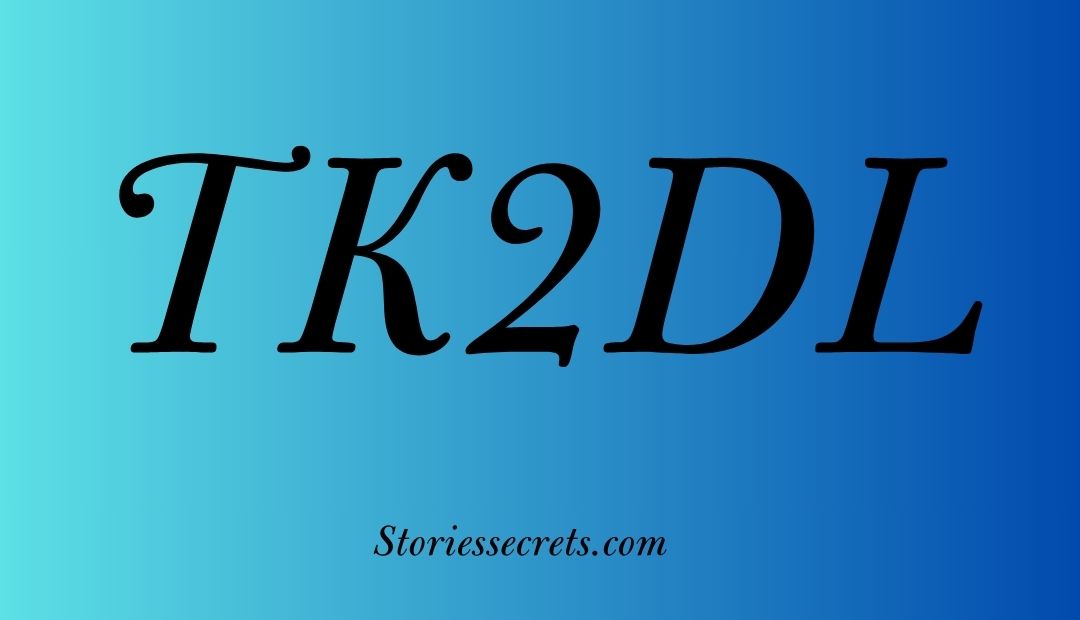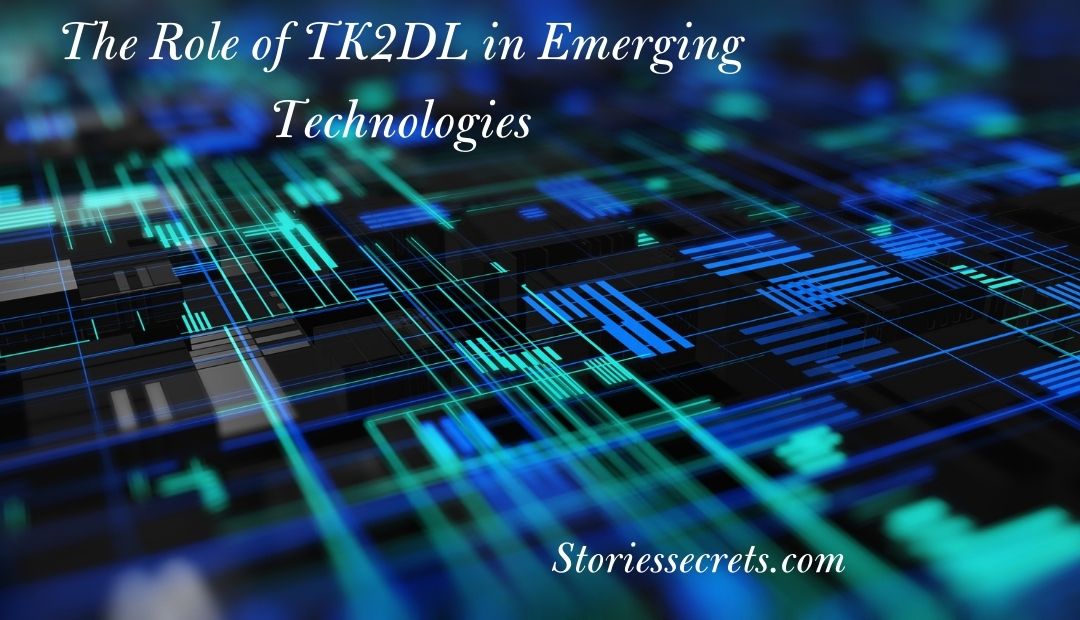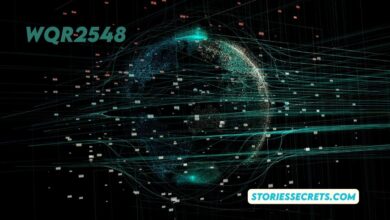Understanding TK2DL: A Comprehensive Guide

TK2DL (Two-Key Two-Dimensional Logistic) is an advanced cryptographic protocol that has been gaining traction for its unique approach to secure communication. Designed to address challenges in data privacy, authentication, and integrity, It is becoming a focal point in both academic research and practical applications. This article provides an overview of It, its functionality, advantages, and common questions surrounding its implementation.
What is TK2DL?
TK2DL stands for Two-Key Two-Dimensional Logistic, a system that employs a combination of two keys and two-dimensional mapping for securing data. Unlike traditional encryption techniques, It uses chaotic logistic mapping, a concept derived from chaos theory, to create unpredictable and highly secure encryption pathways. This dual-key mechanism ensures enhanced protection against brute force attacks and eavesdropping.
How Does TK2DL Work?
The It system relies on two fundamental components:
- Two Keys:
- The encryption process involves two distinct keys – a public key for encryption and a private key for decryption. These keys interact within a chaotic system to enhance security.
- Two-Dimensional Logistic Mapping:
- Logistic mapping is a mathematical model use in chaos theory. By applying this model in two dimensions, It introduces complexity and randomness into the encryption process, making it difficult for unauthorized entities to decode the information.
Key Features of TK2DL
- High Security: The chaotic nature of logistic mapping ensures an unpredictable encryption pathway, making It resilient to attacks.
- Speed and Efficiency: Despite its complexity, It is design to process encryption and decryption at high speeds, suitable for real-time communication.
- Scalability: It can be adapted to different types of data, including text, images, and multimedia, offering a versatile solution for modern encryption needs.
- Resistance to Cryptanalysis: Traditional cryptanalysis techniques struggle against the chaotic and multidimensional nature of It encryption.
Applications of TK2DL
- Secure Communication: Ideal for messaging platforms, emails, and VoIP services.
- Data Storage: Used in securing sensitive information stored on cloud servers or local databases.
- Digital Transactions: Enhances the safety of online payments and cryptocurrency exchanges.
- IoT Devices: Protects communication between smart devices in an Internet of Things ecosystem.
Challenges in Implementing TK2DL
While It offers numerous advantages, its implementation is not without challenges. Understanding and addressing these barriers is crucial for its widespread adoption and effectiveness.
1. Complexity in Integration
The intricate mathematical and chaotic mechanisms of It require developers and engineers to have advanced expertise in cryptography and chaos theory. Organizations may face initial difficulties in understanding and deploying the system without adequate training.
Solution:
Promoting training programs and developing user-friendly interfaces for It can simplify its adoption. Collaboration with academic institutions and cryptography experts can also help overcome this hurdle.
2. Compatibility with Legacy Systems
Many existing systems rely on traditional encryption protocols, which may not be fully compatible with It. Transitioning to a new system often involves redesigning infrastructure, which can be time-consuming and costly.
Solution:
Hybrid encryption models can be introduced, where It is layered on top of existing systems to ensure a smooth transition. Gradual migration strategies can also help organizations adapt without significant downtime.
3. Performance in High-Volume Applications
Although It is efficient, processing high volumes of data or handling real-time communication for large-scale applications may pose challenges in terms of latency or resource allocation.
Solution:
Optimization techniques, such as parallel processing and advanced hardware acceleration (e.g., using GPUs), can enhance the performance of It for large-scale operations.
The Role of TK2DL in Emerging Technologies
The relevance of It extends beyond conventional cybersecurity applications. Its potential integration with emerging technologies further highlights its importance in the future of digital security.
1. Artificial Intelligence (AI)
As AI systems process sensitive data, securing these interactions becomes vital. It can be apply to safeguard the transfer and storage of data used by AI algorithms, ensuring the privacy of users and the integrity of the system.
2. Blockchain Technology
The decentralized nature of blockchain requires robust security mechanisms to prevent unauthorized access. It’s dual-key system and chaotic encryption can add an additional layer of protection to blockchain networks, making them more resilient to cyberattacks.
3. Quantum Computing
The advent of quantum computing poses a significant threat to traditional encryption methods. It, with its chaotic and non-linear approach, is inherently more resistant to the computational power of quantum systems, making it a candidate for post-quantum cryptography.
4. Autonomous Systems
From self-driving cars to smart cities, autonomous systems rely on seamless and secure communication. It can provide the necessary encryption framework to protect these systems from hacking and data breaches.
Common Myths About TK2DL
- “TK2DL is too complicated for practical use.”
While its underlying mechanisms are complex, advancements in software and implementation frameworks are making It more accessible. - “Traditional encryption methods are sufficient; TK2DL is unnecessary.”
As cyber threats evolve, traditional methods are becoming less effective. It addresses vulnerabilities that older protocols cannot. - “TK2DL cannot handle modern encryption demands.”
On the contrary, It is scalable and adaptable, making it suitable for a wide range of applications, from personal communication to industrial operations.
Future Prospects and Research Directions
The development of TK2DL is an ongoing process, with researchers exploring ways to refine and expand its capabilities. Key areas of focus include:
- Enhanced Algorithms: Developing optimized versions of It to improve speed and efficiency without compromising security.
- Standardization: Creating universal standards and protocols for It to ensure compatibility across different platforms and industries.
- Awareness and Education: Increasing awareness about the benefits of It through workshops, conferences, and publications.
- Interdisciplinary Collaboration: Merging insights from mathematics, computer science, and engineering to explore new applications and improvements.

FAQs About TK2DL
- Why is TK2DL better than traditional encryption?
It incorporates chaos theory, making it highly resistant to decryption attempts compared to linear cryptographic methods. Its dual-key mechanism adds another layer of complexity. - Is TK2DL resource-intensive?
No, It is optimize for speed and efficiency, ensuring it does not overburden computational resources. - Can It be integrated into existing systems?
Yes, with its adaptable architecture, It can be seamlessly integrated into existing communication and data storage systems. - Is It future-proof?
Given its reliance on chaotic systems and multidimensional mapping, It is well-equipped to withstand evolving cryptographic challenges. - How does It handle large datasets?
The scalability of It ensures that it can encrypt and decrypt large datasets effectively without compromising performance.
The Future of TK2DL
As the digital world evolves, so do the threats to data security. It stands out as a promising solution, offering unmatched encryption capabilities rooted in innovative chaos theory. Its applications are not only relevant today but also hold significant potential for addressing future challenges in cybersecurity.
In conclusion, It is more than just a cryptographic protocol; it represents a paradigm shift in how data security is approach. With its unique features and adaptability, It is poise to become a cornerstone in secure communication and data protection. Whether you are a business looking to enhance security or a researcher exploring cryptographic advancements, It offers a robust and innovative solution.
Conclusion
TK2DL represents a revolutionary step in the world of encryption. By leveraging chaos theory and dual-key mechanisms, it provides unparalleled security and adaptability. Despite challenges in implementation, its potential applications in AI, blockchain, quantum computing, and beyond make it a critical component of the future cybersecurity landscape.
For organizations, researchers, and developers, It offers a pathway to not only enhance security but also stay ahead of evolving threats in an increasingly interconnected world. As awareness and research continue to grow, It is set to play a pivotal role in shaping the future of secure communication and data protection.





